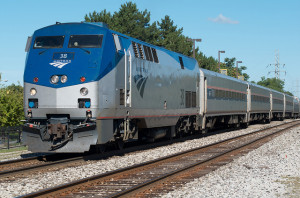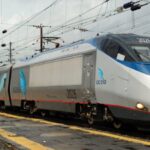If You Build It (and Speed It Up), People Will Come.
It’s no secret what has to be done to get more people – a lot more people – to start riding trains. You have to to reduce running times, meaning trains have to be faster.
Of course, that takes time and money. A lot of each.
And a lot of things have to be done just to shave minutes off existing running times. More sidings are needed to minimize delays from slow freight traffic. Curves have to be straightened out so passenger trains don’t have to constantly slow down, then speed up again. Overpasses have to be built to allow trains to pass over areas that are now bottlenecks.
The cumulative effect of all that can be a big deal. For instance, several stretches of track between Chicago and Detroit have been upgraded permitting Amtrak’s Wolverine to run at 110 miles-per-hour there. Depending on the time of day, those trains now take anywhere from 5:45 to 5:20 for their runs. And guess what: ridership is up almost 12 percent.
And work continues. Once completed, officials say the Detroit-Chicago run will take a snappy 4 hours 30 minutes … maybe less. Here’s what that really means:
You’ll be able to take the train from Detroit to Chicago, spend the better part of the work day there, and get back home all on the same day. And the price is right: Amtrak’s round-trip fare today is about $123. The cost for that same round-trip by air is more than $300, plus you’ll have the trouble and expense of getting to and from the airports.
No wonder Amtrak ridership has jumped. What’s funny is that a lot of people are surprised.



